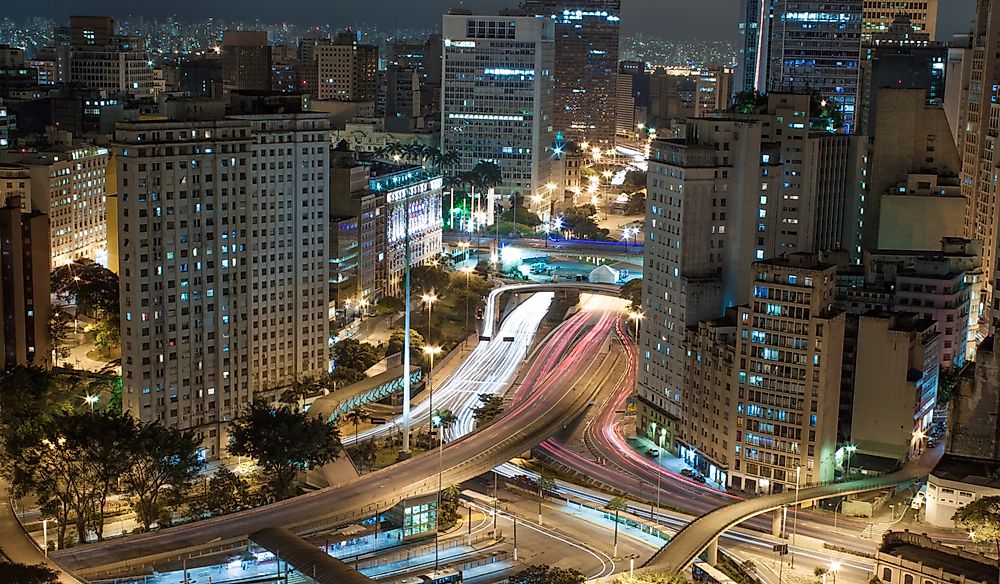São Paulo - The Capital Of The São Paulo State Of Brazil

São Paulo is a Brazilian state located in the southwestern part of the country’s Southeast Region. It encompasses an area of 248,222 km2 and has an estimated population of 45,595,497, ranking as Brazil's 12th most extensive state and its most populous. Additionally, São Paulo is the most prosperous state in the country, contributing 33.9% of Brazil's total gross domestic product (GDP). Given its thriving industrial sector, São Paulo has been nicknamed as "Locomotive of Brazil." In fact, the state of São Paulo is wealthier than several South American countries, such as Bolivia, Argentina, and Uruguay, combined. The state capital of São Paulo is also named São Paulo.
Capital of São Paulo: São Paulo
São Paulo city is located in Brazil’s Southeast Region, occupies an area of 1,521.11 km2, and is situated on a plateau at an average elevation of 760 m above sea level. São Paulo is classified as an alpha global city and is the world’s largest Portuguese-speaking city. The city is only 70 km from the Atlantic Ocean and is connected by two highways to the port city of Santos.
Demographics of São Paulo
São Paulo has an estimated population of 12,176,866, ranking as the most populous city in Brazil. According to the 2010 census, São Paulo's population includes the following population groups: White or Caucasian (60.6%), Pardo or mixed-race (30.5%), Black (6.5 %), Asian (2.2%), and indigenous (0.2%). São Paulo is Brazil’s most multicultural city and also includes the country’s largest Arab, Japanese, and Italian populations. Major international cultural and sporting events are held in São Paulo.
History of São Paulo
The area that is now São Paulo was historically inhabited by the Tupi people and other indigenous populations. Portuguese colonizers established a settlement in the area in 1554, but the growth of São Paulo was slow for the first two centuries, and it remained a small village. This lack of growth is explained by its distance from the ocean. However, the fate of São Paulo quickly changed following the discovery of gold in the region. Soon, Portuguese explorers, called Bandeirantes, began to use the settlement as a resting place. As a result, the local economy grew as it catered to the food and shelter needs of the Bandeirantes.
São Paulo’s status was upgraded from town to city on July 11, 1711. When gold reserves in the area became depleted in the 18th century, sugarcane cultivation became the main driver of the city’s economy. Transport infrastructure was built to connect the city to other areas, including the port city of Santos. In 1822, following the independence of Brazil, São Paulo was declared an Imperial City by Emperor Pedro I. Since that time, the city has continued to grow and has emerged as the most prosperous city in the state of São Paulo, as well as Brazil.
Economy of São Paulo
São Paulo is regarded as Brazil’s financial capital and features Latin America's largest stock exchange. Most of Brazil’s top corporations and financial institutions have headquarters in São Paulo. Additionally, many foreign corporations also have offices in the city. São Paulo is the country’s richest city and the ninth wealthiest in the world based on GDP. The city is Brazil's major export center, especially for commodities such as soybean, coffee, raw sugar, and corn. São Paulo also has a rapidly developing service sector.











